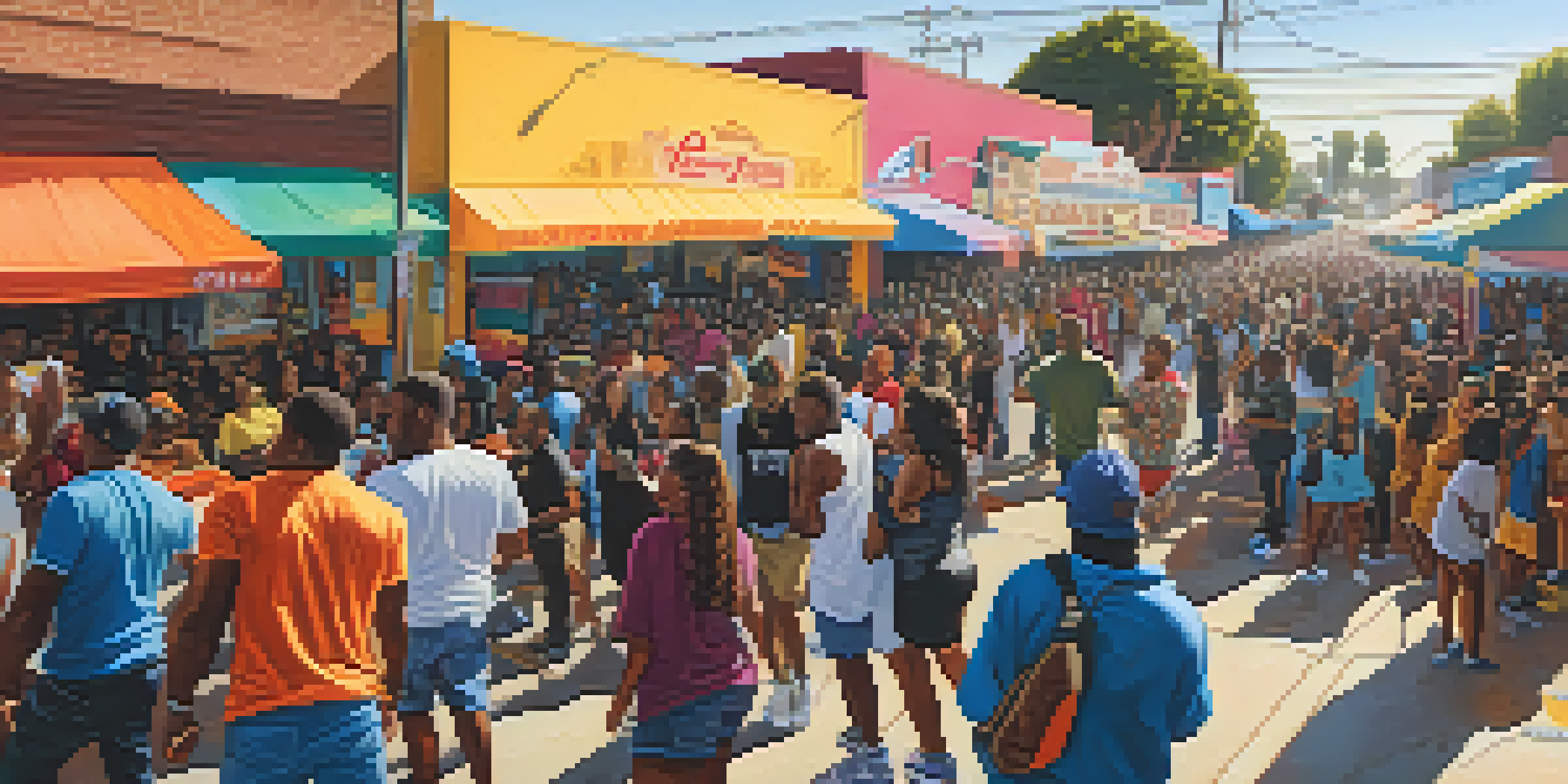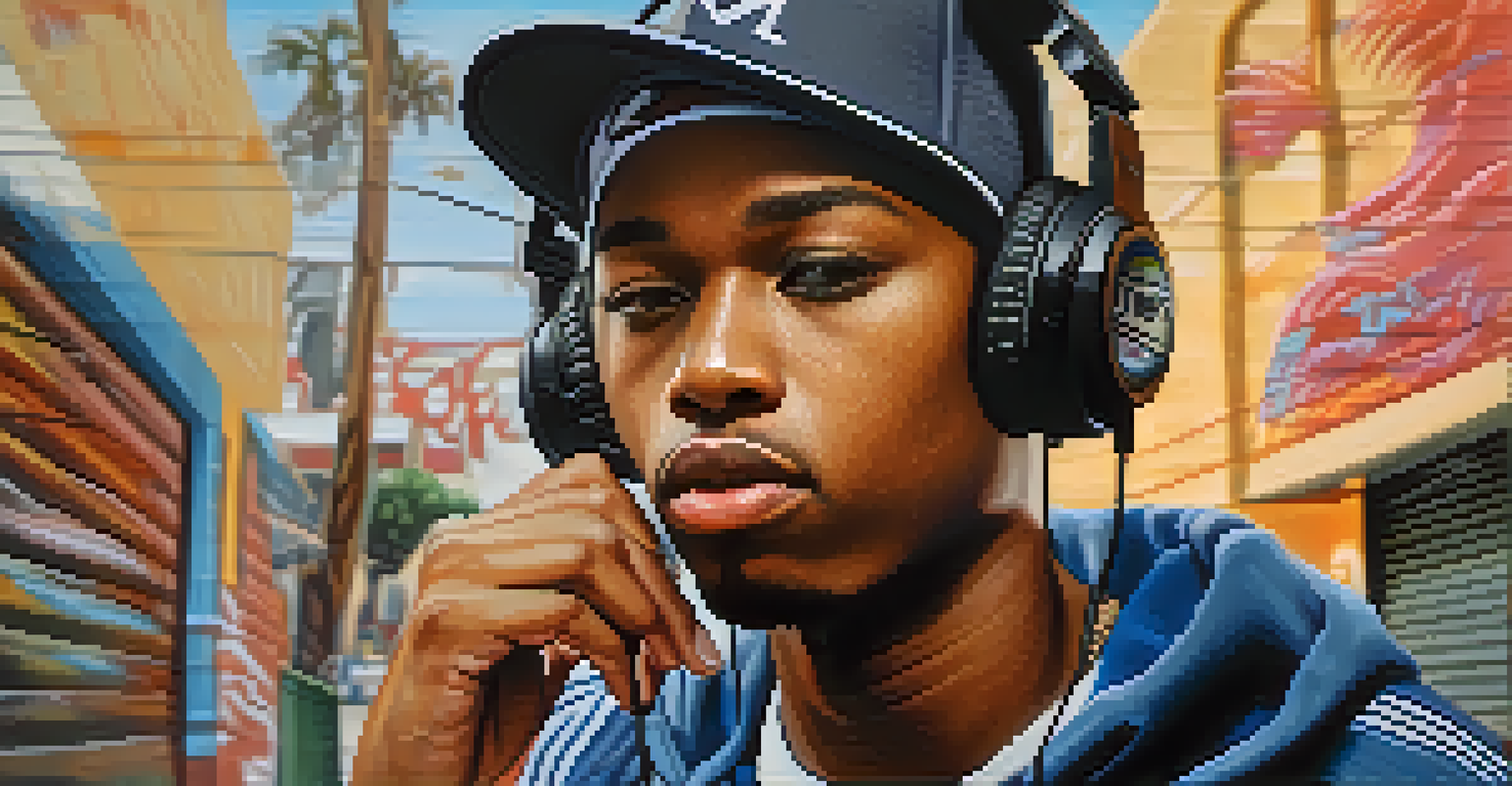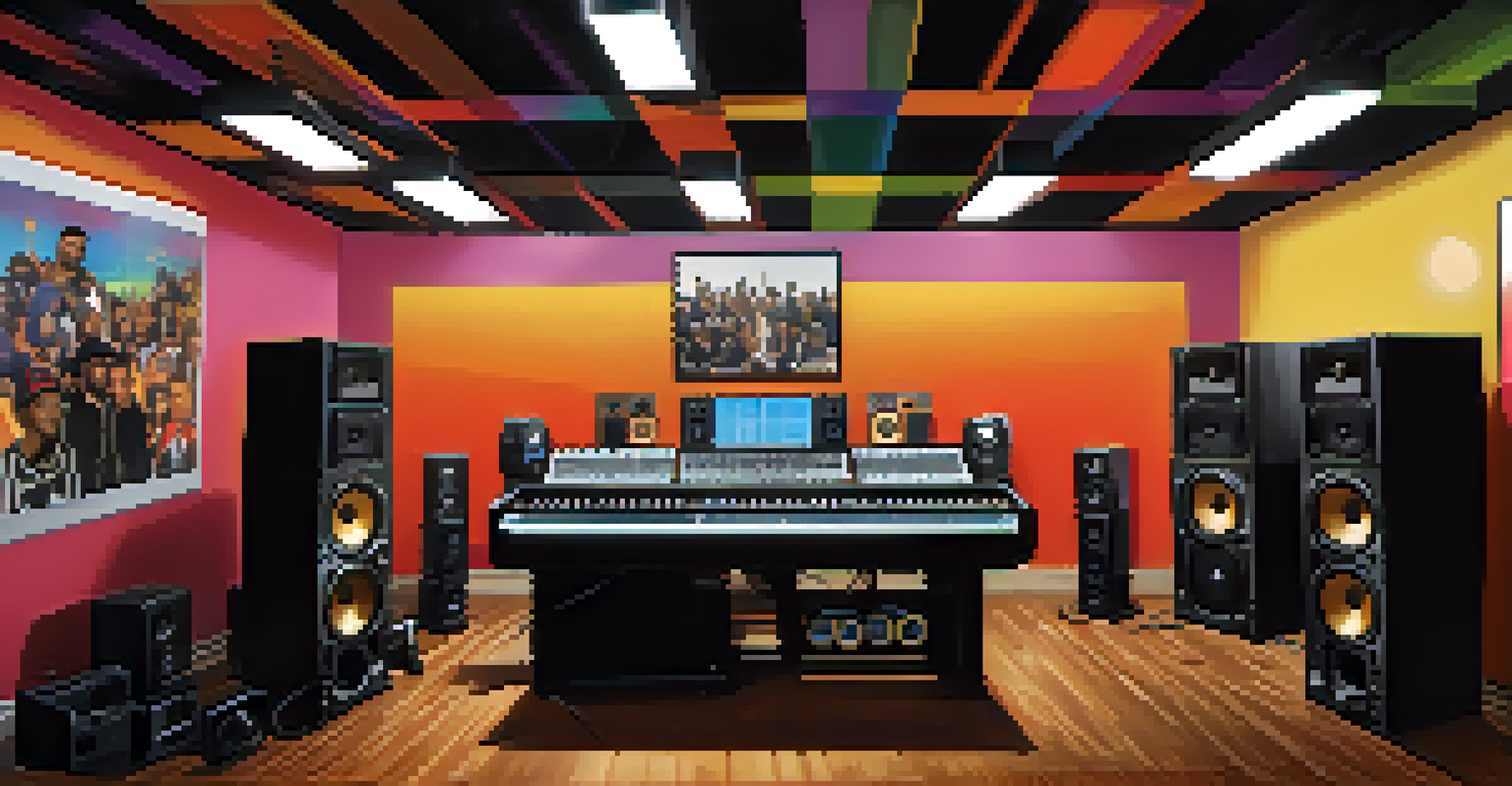Compton's Underground Scene: The Birth of Hip-Hop Subgenres

The Roots of Hip-Hop: Compton's Musical Landscape
Compton's underground scene is deeply intertwined with the origins of hip-hop. In the late 1970s and early 80s, local artists began experimenting with beats and rhymes, drawing inspiration from funk, soul, and disco. This melting pot of sounds laid the groundwork for what would evolve into a distinct hip-hop culture.
Hip-hop is a vehicle for social change, a reflection of our realities.
As artists honed their skills in local block parties and community centers, they found a voice that resonated with the struggles and triumphs of their neighborhoods. The vibrant energy of Compton fueled creativity, leading to the emergence of unique styles that would soon capture the attention of the wider music world.
This early period was marked by a sense of rebellion and a desire for authenticity, setting the stage for the groundbreaking subgenres that would follow. The passion of local artists became a catalyst for change, pushing the boundaries of hip-hop music.
Gangsta Rap: The Fierce Voice of the Streets
One of the most influential subgenres to emerge from Compton is gangsta rap. Artists like N.W.A brought the raw realities of street life to the forefront, painting vivid pictures of their experiences through their lyrics. This unapologetic storytelling resonated with listeners, creating a cultural phenomenon that challenged societal norms.

Gangsta rap didn't just entertain; it sparked discussions about race, violence, and police brutality, making it a powerful form of social commentary. The genre's impact reached beyond music, influencing fashion, language, and lifestyle choices across generations.
Compton: Birthplace of Hip-Hop
Compton's vibrant underground scene in the late 70s and early 80s laid the foundation for hip-hop's evolution, blending diverse musical influences.
While gangsta rap faced criticism for its explicit content, it undeniably opened doors for other subgenres, allowing artists to explore new themes and styles. The unapologetic nature of this genre laid a foundation for future hip-hop artists to express their truths.
The Rise of G-Funk: Funky Beats and Smooth Flows
G-funk emerged as a prominent subgenre in the early 1990s, characterized by its laid-back beats and melodic synthesizers. Pioneered by artists like Dr. Dre and Snoop Dogg, G-funk combined elements of funk with hip-hop, creating a sound that was both fresh and nostalgic. This catchy, groove-laden style quickly gained popularity, becoming synonymous with West Coast hip-hop.
The beauty of hip-hop is that it allows you to express your voice, your culture, and your experiences.
The smooth, relaxed vibe of G-funk allowed it to carve out a unique identity within the hip-hop landscape. Its signature sound often featured slow, rolling basslines and catchy hooks, making it a staple at parties and on the radio. The genre's appeal extended beyond Compton, influencing artists and listeners around the world.
G-funk also redefined the way artists approached lyrics, emphasizing storytelling and personal experiences. This shift allowed for more nuanced and relatable narratives, contributing to the overall evolution of hip-hop music.
The Influence of Chicano Hip-Hop: A Cultural Blend
Chicano hip-hop emerged as a powerful subgenre that reflects the cultural heritage of Mexican Americans in Compton. Artists like Cypress Hill and Kid Frost incorporated elements of their roots into their music, creating a distinctive sound that resonated with their communities. This blend of English and Spanish lyrics showcased the rich tapestry of experiences that shaped their identities.
The Chicano hip-hop scene often addresses themes of identity, struggle, and pride, making it an essential part of the broader hip-hop narrative. The fusion of traditional sounds with contemporary beats created a unique musical landscape that enriched the genre.
Gangsta Rap's Cultural Impact
Gangsta rap emerged from Compton, challenging societal norms and sparking crucial discussions about race and violence through powerful storytelling.
This subgenre also opened doors for artists of diverse backgrounds, encouraging collaboration and cross-genre experimentation. By highlighting the shared experiences of marginalized communities, Chicano hip-hop has become a vital voice within the larger hip-hop movement.
Alternative Hip-Hop: Pushing Boundaries in Compton
Alternative hip-hop emerged from the underground scene as artists sought to challenge the conventions of mainstream rap. In Compton, this movement gave rise to innovative sounds and experimental styles, allowing artists to explore a wide range of influences. Groups like Odd Future redefined what hip-hop could be, blending genres and breaking down barriers.
This subgenre often incorporates elements of rock, jazz, and electronic music, resulting in a fresh and eclectic sound. The emphasis on creativity and individuality has encouraged artists to embrace their uniqueness, fostering a sense of community that values diversity.
Alternative hip-hop also prioritizes lyrical depth and introspection, allowing artists to tackle complex themes and personal experiences. This approach has resonated with audiences looking for authenticity in a saturated music market.
The Impact of Social Media on Compton's Hip-Hop Scene
In recent years, social media has revolutionized how artists from Compton share their music and connect with fans. Platforms like SoundCloud, Instagram, and TikTok have provided a space for emerging artists to showcase their talents without the constraints of traditional record labels. This democratization of music has led to a surge of new voices and fresh perspectives in the hip-hop scene.
Through social media, artists can easily promote their work, collaborate with others, and engage with their audience on a personal level. This direct interaction fosters a sense of community, allowing fans to feel more connected to the artists they love.
Social Media Transforms Hip-Hop
The rise of social media has democratized Compton's hip-hop scene, allowing new artists to connect with audiences and innovate without traditional barriers.
The instant feedback and viral nature of social media have also influenced the sound of hip-hop, encouraging artists to experiment with new styles and trends. This fluid exchange of ideas has transformed Compton's underground scene into a vibrant, ever-evolving hub of creativity.
The Future of Compton's Underground Hip-Hop Scene
As Compton's underground scene continues to evolve, new subgenres and styles are emerging, reflecting the ever-changing landscape of hip-hop. With the rise of technology and access to global audiences, artists are finding innovative ways to express their creativity. This new generation is not only honoring the legacy of their predecessors but also pushing the boundaries of what hip-hop can be.
Collaboration remains a key theme in the future of Compton's hip-hop scene, as artists from different backgrounds come together to create unique sounds. This spirit of unity fosters growth and innovation, ensuring that the music remains relevant and resonant.

Ultimately, the future of Compton's underground hip-hop scene holds endless possibilities. The rich history and cultural significance of the area will continue to inspire artists as they carve their paths in this dynamic genre.